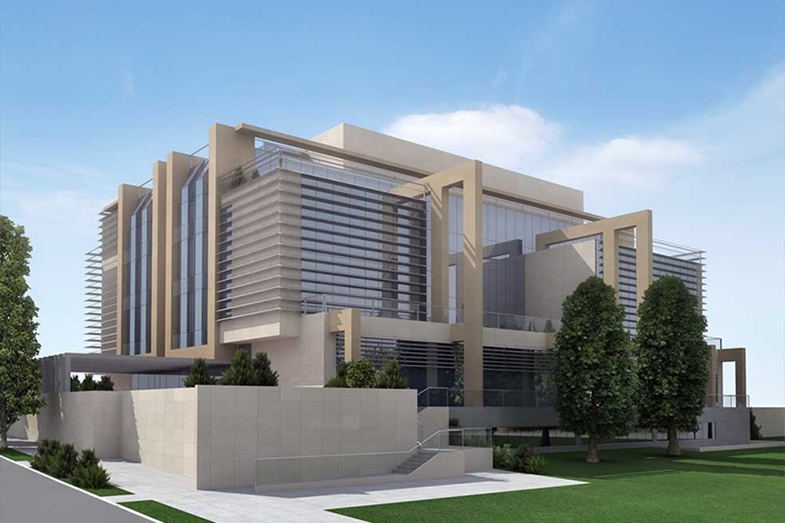
Najčešći aspekti pametne zgrade su komfor, sigurnost i energetska učinkovitost. Svi ovi parametri znamo da omogućavaju sigurnije i ugodnije stanovanje, a na kraju i smanjenje troškova.
Kako tehnologije se sve brže i brže napreduju, a internet poseduje gotovo svako domaćinstvo, ne čudi rađanje ideje da pametne zgrade koriste iste te tehnologije, kao npr. naši mali i veliki kućni aparati.
U današnjem tekstu, Grading se bavi upravo pitanjem upotrebe tehnologije unutar zgrada, kako bi stanarima omogućili stvari koje smo naveli na početku: komfor, sigurnost, i uštedu energije.
Dakle – kako pametne zgrade prilagođavaju potrošnju i kako pametne zgrade štede novac?
Šta su pametne zgrade (ili čak pametni gradovi)
Pametni gradovi i zgrade su kao koncept prisutne poslednjih 40 godina. Od intrigantne vizije i zanimljivog koncepta, pametne zgrade postale su globalno prisutan fenomen i poželjan način stanovanja.
Razlika između pametne zgrade ili grada, odnosnoi “tradicionalne“ (održive) gradnje ogleda se, pre svega, u prisutnosti pametnog uslužnog sistema. On predstavlja potpuno novi sloj u ukupnom “tkivu” ili strukturi zgrade.
Posebnost pametne zgrade, ili čitavih pametnih gradova leži u činjenici da su kompleksni, podložni promenama i sposobni su da uče i na kraju – evoluiraju.
Do kraja 2025. godine, očekuje se da će oko 58% svetskog stanovništva (što je oko 4,6 milijardi ljudi) živeti u područjima gde su pametne zgrade.
U razvijenim regijama, urbana populacija mogla bi narasti i do 81% ukupnog stanovništva. Ova procena predstavlja ozbiljne izazove za arhitekte i građevinare, koji će morati da razmisle o tome kako osigurati kvalitet života za (brzo)rastuću gradsku populaciju – ali na održiv način.
Stoga nam ostaje da rešimo problem uštede vremena i novca. A kako najbolji način pokazale su se pametne zgrade.
Kako pametne zgrade štede energiju?
Pametne zgrade “nameću” kvalitet života i življenja kao primarni cilj stanovanja u nekom objektu.
Koncept pametnog grada i pametne zgrade je model (način) razvoja održivog grada. Ne samo da pametne zgrade traže inkorporiranje i ponalaženje novih materijala, već i alata, i stambenih rešenja koja će više biti u skladu sa samom prirodom.
Prva pametna zgrada na svetu je City Place, koja je dovršena 1983. godine u Hartfordu, u Sjedinjenim Američkim Državama.
Zasluge za izgradnju ove pametne zgrade to ne pripadaju ni arhitekti, niti investitoru, već korporaciji UTBS (United Technology Building Systems), koja je od 1981. strastveni zagovornik koncepta pametne (izv. inteligentne) gradnje u SAD-u.
Integracija pametnih uslužnih sistema u pametne zgrade
Pojam pametne zgrade odnosno inteligentne gradnje, skovan je prvi put u New York Timesu. Inteligentna gradnja podrazumeva da će usluge svake zgrade biti orkestrirane kompjuterski, i povezane mrežom optičkih vlakana.
Umreženo grejanje, sigurnost, ventilacija, i još mnogo toga
“Usluge” u zgradi obično podrazumevaju sve ono što grada već ima, poput grejanja, ventilacije, rasvete, sigurnosnih sistema, transporta, elektronike, zaštite od požara – ali na jedan integrisan način, gde sve radi zajedno i prati rad jedno drugog.
Na taj način, sve što koristimo u zgradi, a što nam olakšava život i čini ga udobnim, ekonomisaće i potrošnju, upravljanje zgradom, ali će i će ekonomizovati pamentnu gradnju i učiniti je pristupačnijom.
Sistemska analiza potrošačkih navika
Pametna zgrada prikuplja podatke, sprovodi njihovu sistemsku analizu u interakciji sa korisnicima i upravlja integrisanim sistemima zgrade prilagođavajući njihovu funkciju potrebama korisnika – ili, bolje reći, potrebama njihovog budžeta.
Osim toga, uticaj pametne zgrade i njenih uslužnih sistema moguće je proširiti i izvan zgrade. Savremene pametne zgrade imaju i tu mogućnost da utiču, regulišu ili čak kontrolišu na njihovo neposredno okruženje.
Prilagođavanje graditeljstva i građevine novim zahtevima tržišta
Novo, tehnološko osavremenjivanje zgrada i gradova mora da deluje uporedo sa rešavanjem nedostataka koji su posledica loših odluka u planiranju urbanih prostora ili projektovanju zgrada.
Kvalitet urbanih prostora, pametne zgrade ili inteligentna građevina ipak je “samo” konačna posledica kvalitetnog plana, odnosno projekta.
Na primer, kod zgrade je izuzetno bitno voditi računa o njenoj optimalnoj orijentaciji, lokaciji i organizaciji primarnih funkcija. Takođe je neizostavno obratiti pažnju na savremeniji odabir građevnih materijala.
Kako će se pametne zgrade razvijati i širiti u našoj zemlji, biće praćeno budnim okom našeg tima u Grading građevini. Spremni smo da svojim resursima, radnom snagom i inženjersko-tehničkim kadrom dočekamo promene, i izgradimo pametniju budućnost.






